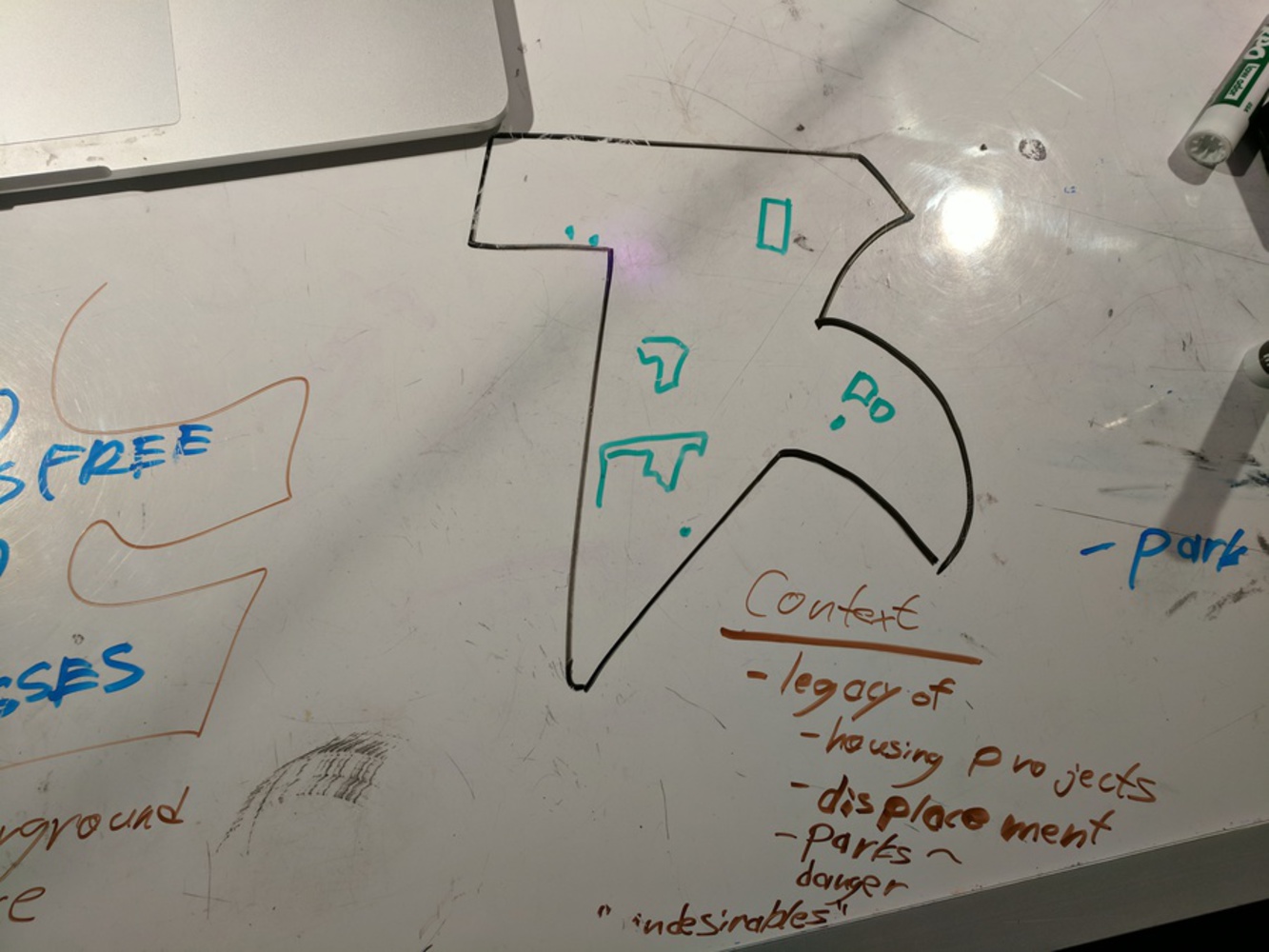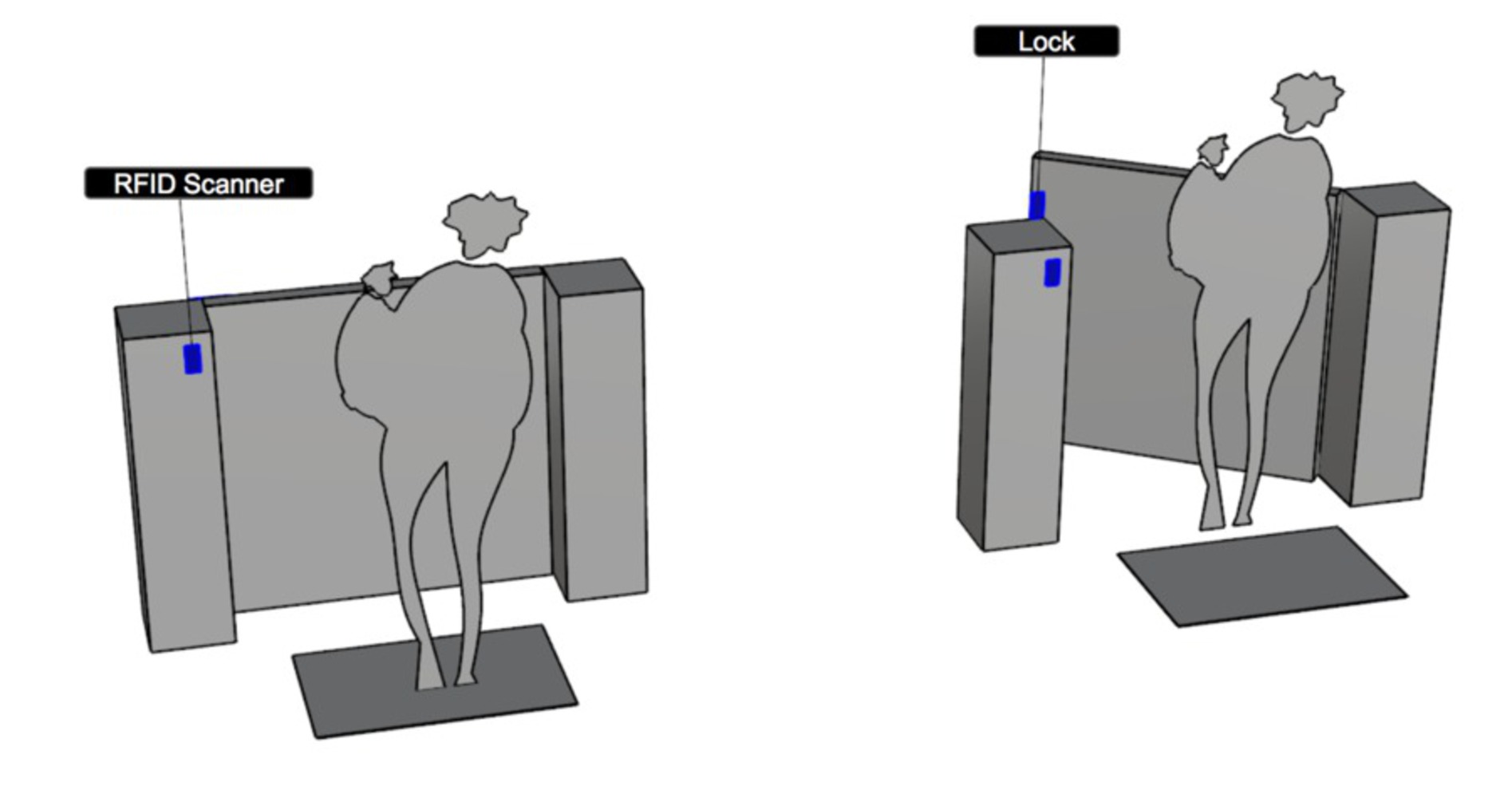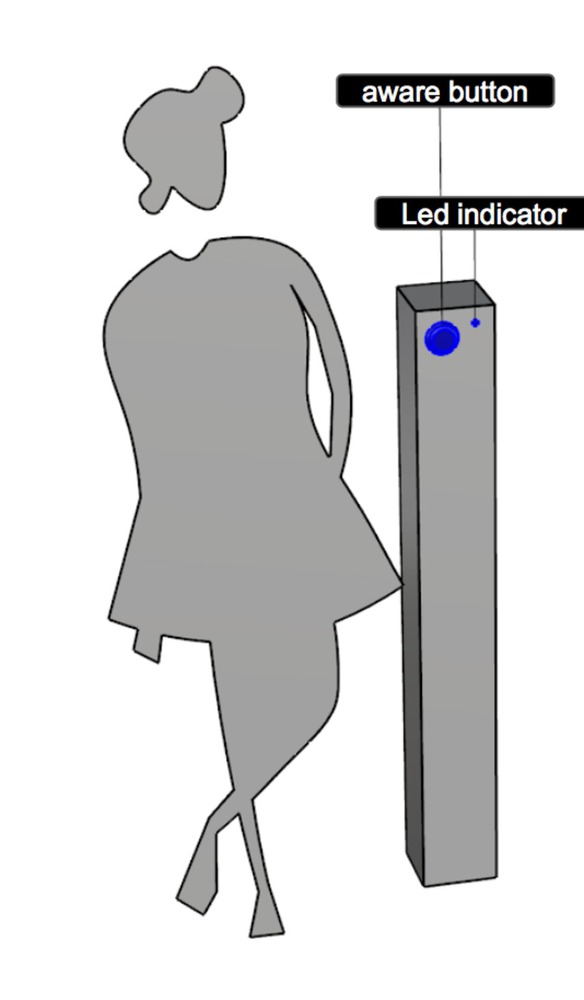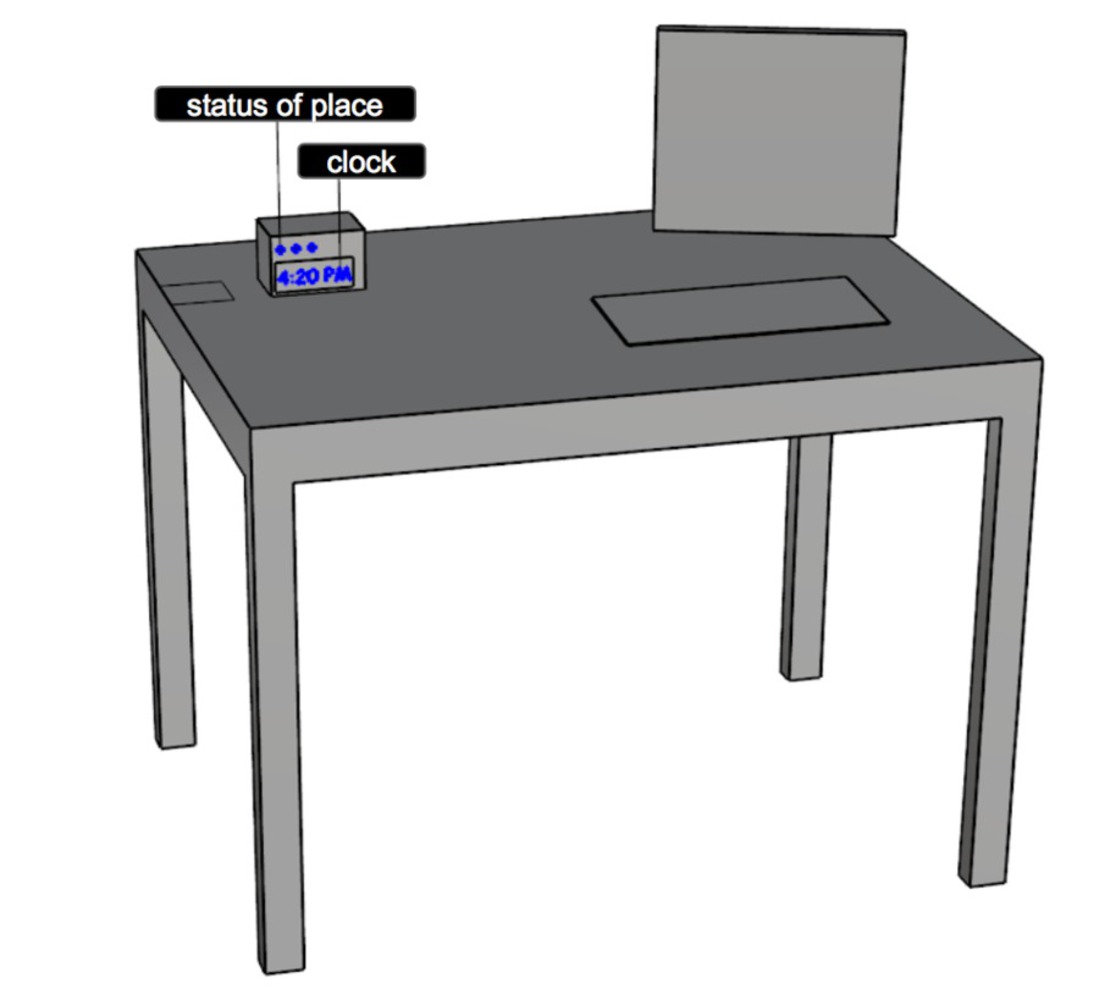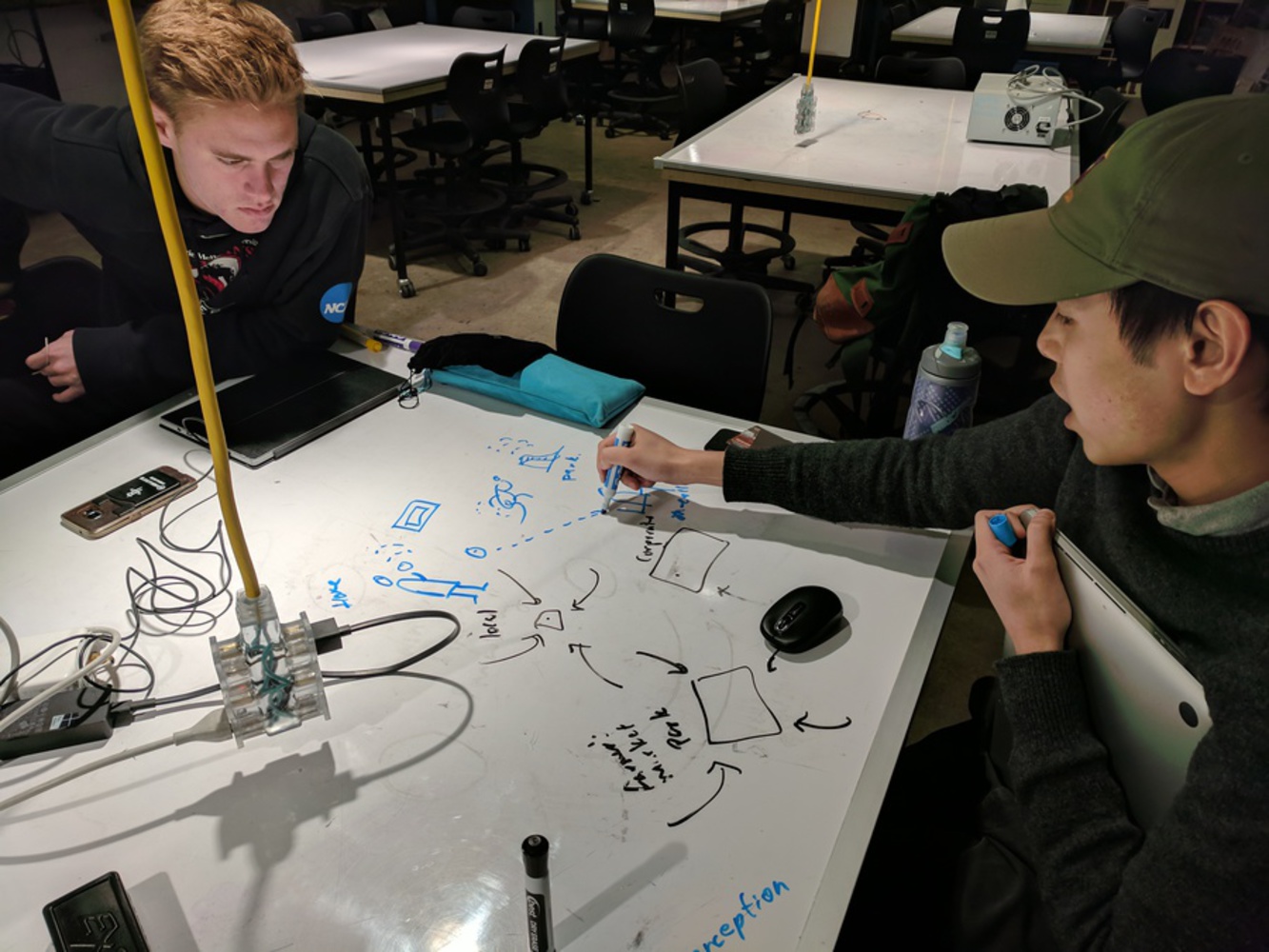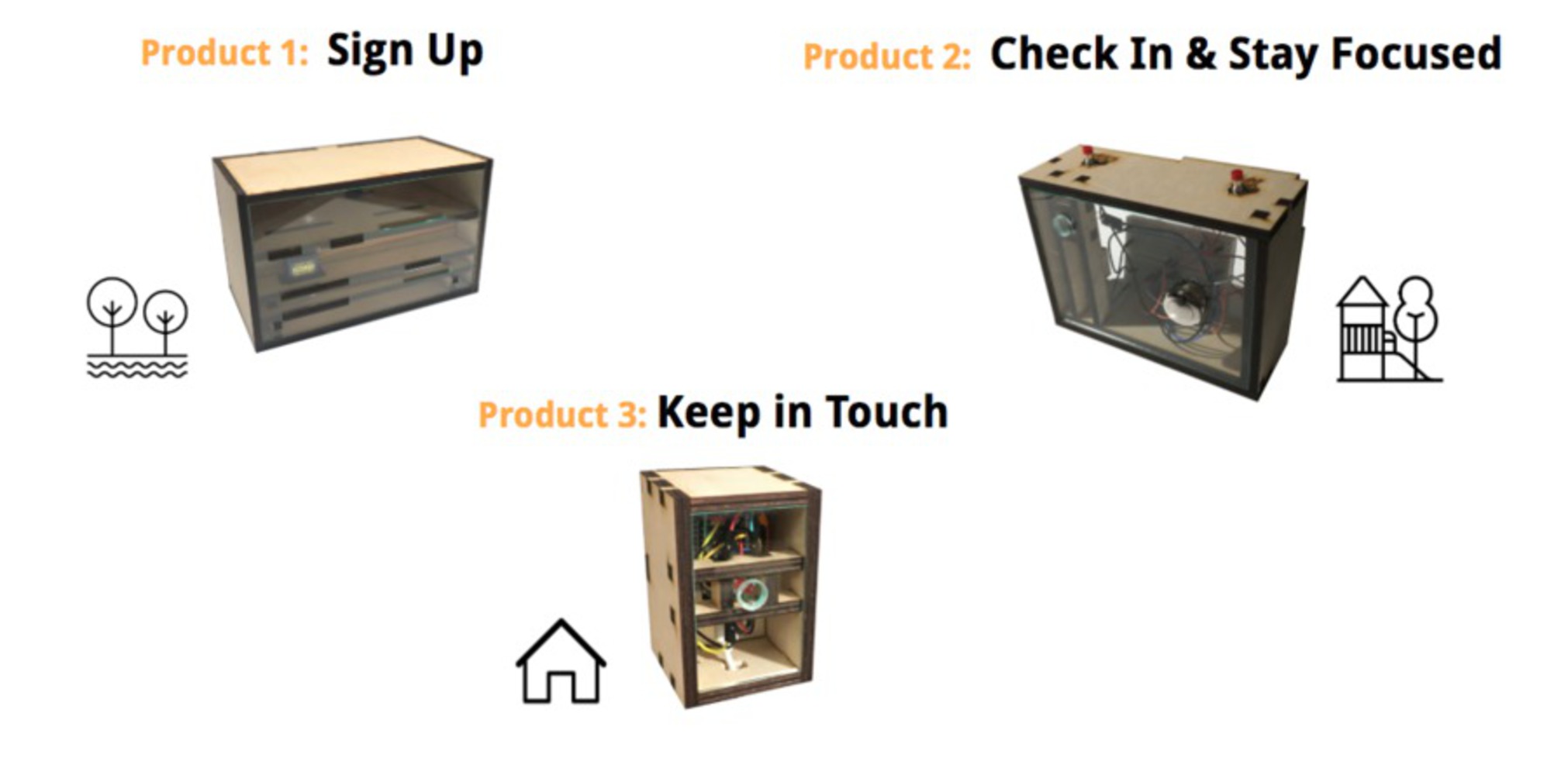Intention
Eyes on the Street is the notion that community is dependent on public visibility. This means that the lack of people in public spaces gives the perception that the area is not inviting or safe. For years, East Liberty was considered very unsafe but gentrification has slowly changed that perception. There are still areas in the neighborhood that are empty which result in the lack of community. However, communities are fundamentally related to the people that are in it, not the objects, so our team sought out to provide a way to get people to go to public settings and build on their sense of community.
In order to help bridge seemingly disconnected communities in recently gentrified neighborhoods, our project sets out to transform playgrounds into new spaces for families to connect with one another using a common theme: safety. Using a strategy that sets out to amplify an existing social network rather than replacing one, we hope to create shared safe spaces for people of all ages to enjoy public space in a more connected way. Through digitally connecting a public space with a private space, the project creates a shared commons, where each individual has a small claim of ownership in the space. By creating a tightly-knit community around a connected playground, the project sets out to help promote a deeper sense of community by connecting people who would otherwise have no awareness that there are others interested in supporting a safe environment.

